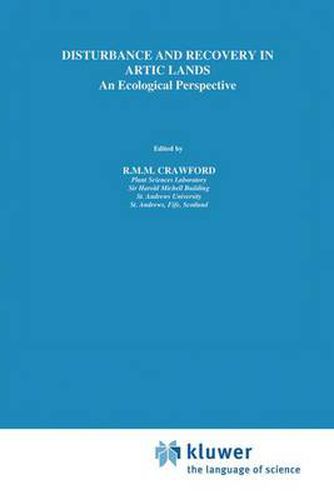Readings Newsletter
Become a Readings Member to make your shopping experience even easier.
Sign in or sign up for free!
You’re not far away from qualifying for FREE standard shipping within Australia
You’ve qualified for FREE standard shipping within Australia
The cart is loading…






This title is printed to order. This book may have been self-published. If so, we cannot guarantee the quality of the content. In the main most books will have gone through the editing process however some may not. We therefore suggest that you be aware of this before ordering this book. If in doubt check either the author or publisher’s details as we are unable to accept any returns unless they are faulty. Please contact us if you have any questions.
Disturbance is no new feature in the Arctic environment. The factors that create the Arctic habitat include marked climatic oscillations, physical disturbance and fluctuations in herbivore populations. The combination of environmental stress and disturbance due to habitat instability and the possibility of periods of intense grazing impose a particularly testing blend of adverse conditions for plant survival. The physical nature of the terrain, with constant soil movement through cryoperturbation and solifluction contributes to the fragility of Arctic habitats. To this scenario must be added disturbance by man, in the quest for natural resources or merely as a result of tourism. The Arctic landscape is undoubtedly one that is frequently repaired by natural succession, but whether or not this built-in resilience is adequate to restore degraded ecosystems after human intervention is an unanswered problem that forms the subject matter of this volume.
$9.00 standard shipping within Australia
FREE standard shipping within Australia for orders over $100.00
Express & International shipping calculated at checkout
This title is printed to order. This book may have been self-published. If so, we cannot guarantee the quality of the content. In the main most books will have gone through the editing process however some may not. We therefore suggest that you be aware of this before ordering this book. If in doubt check either the author or publisher’s details as we are unable to accept any returns unless they are faulty. Please contact us if you have any questions.
Disturbance is no new feature in the Arctic environment. The factors that create the Arctic habitat include marked climatic oscillations, physical disturbance and fluctuations in herbivore populations. The combination of environmental stress and disturbance due to habitat instability and the possibility of periods of intense grazing impose a particularly testing blend of adverse conditions for plant survival. The physical nature of the terrain, with constant soil movement through cryoperturbation and solifluction contributes to the fragility of Arctic habitats. To this scenario must be added disturbance by man, in the quest for natural resources or merely as a result of tourism. The Arctic landscape is undoubtedly one that is frequently repaired by natural succession, but whether or not this built-in resilience is adequate to restore degraded ecosystems after human intervention is an unanswered problem that forms the subject matter of this volume.